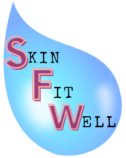While acne pore vacuums have gained significant popularity as of late, it can do more damage than good.
You should never use an acne pore vacuum as it causes inflammation, irritation, and bruising to the skin.
Table of Contents
What Is An Acne Pore Vacuum?
An acne pore vacuum is a small, hand held suction device that essentially pulls “gunk” out of your skin. Blackheads, sebum, dead skin – You name it. An acne pore vacuum is supposed to suck it right up!
These are available online and are becoming a popular way to exfoliate dead skin. You can also have a similar procedure done in a dermatologist’s office.
These devices include different sized heads that you can switch out depending on the area in which you are “vacuuming”. Smaller nozzles are better meant for around the nose while larger nozzles are for the cheeks and forehead.
While this may seem like a great way to “clean out” your pores, an acne pore vacuum may be harming your skin more than it is helping it.
Are Pore Vacuums Bad For You?
While receiving a suctioning treatment from a professional dermatologist’s office may yield some benefits to the skin, it is generally not recommended to use a pore vacuum on your skin.
Although there is a (very) small benefit of skin exfoliation, skin suctioning can tear your skin without you even knowing. These are called micro-tears. And they occur with any type of physical exfoliation. The harsher the exfoliation, the more damage it does to your skin and your skin’s moisture barrier.
When damage is done to the skin, this can lead to an increased amount of inflammation, redness, soreness, and can spread acne-causing bacteria around more easily to broken tissues.
This also disrupts the skin barrier, which deprives the skin of its ability to effectively fight against environmental stressors.
These external stressors include UV rays, bacteria, pollution, and physical damage. Something as seemingly simple as using a pore vacuum could cause tissue damage that leads to a myriad of skin issues.
In addition, pore vacuums often harbor bacteria in the nozzles used if not cleaned and sanitized properly. In this way, you are spreading various types of bacteria on the skin, which can cause infections and dry patches.
Do Dermatologists Recommend Blackhead Vacuums?
Depending on the medical professional, they may weigh these pros and cons differently. The benefits? Pore vacuums may provide some exfoliation to the skin, and allow the skin to look “cleaner” while removing blackheads and whiteheads along the way.
However, handheld devices that are used at home often are used improperly and can cause damaged tissues and do more harm than good.
Licensed professionals are trained and are better equipped with high quality equipment that lessen your risk of skin damage.
It should be noted that at home pore vacuums usually have less suction and therefore, may not cause severe skin issues.
Despite this, acne vacuums can still cause damaged tissues, a disrupted skin barrier, infections from not cleaning the nozzles properly, and even bruising in sensitive areas of the face.
Do Pore Vacuum Bruises Go Away?
As mentioned above, pore vacuums can actually cause bruises on the skin.
This occurs in particularly sensitive areas. Sensitive areas include facial regions that are naturally thin, such as around the eye area. In addition, the sides of the nose are prone to inflammation and around the lips.
Using a pore vacuum can cause bruising in these areas, and can even cause bruising in other less sensitive areas if the suction is used too many times in one specific area.
Bruising can last anywhere for 3 days to 2 weeks, depending on how badly the capillaries have been damaged in response to heavy suction or going over a specific area too many times.
How Long Does Redness From Pore Vacuum Last?
Redness will occur as soon as you use an acne pore vacuum.
This is due to the pressure applied to the skin, which encourages blood flow to the area.
Redness can last a short while, but may persist if you regularly use an acne pore vacuum.
This redness will continue to get worse due to an increase in inflammation in the skin from the pressure from the suction.
How Do You Get Gunk Out of Pores?
Rather than physically suctioning out debris from your pores, the best way to get “gunk” out of your pores is to chemically exfoliate the skin.
Chemical exfoliation involves the use of an acid to increase cell turnover. This is a fancy way of saying that chemical exfoliators will cause your dead skin cells to shed faster.
These exfoliants are gentle on the skin, increase hydration, provide even exfoliation across the skin surface, get rid of blackheads, and are anti-inflammatory.
Some chemical exfoliants to be aware of include lactic acid and mandelic acid, which are gentle exfoliators. One exfoliator targeted toward acne includes salicylic acid. A stronger chemical exfoliator includes varying concentrations of glycolic acid.
The use of physical exfoliators should be avoided at all costs. This includes the acne vacuum. You will be unable to control the amount of exfoliation your skin receives. In addition, it can cause irritation, redness, bruising, and breakouts due to the friction used. Read more about acne caused by friction and physical exfoliation here.
Are Nose Strips Bad For You?
Like physical exfoliation, nose strips physically remove “gunk” out of your nose. This includes blackheads, whiteheads, and dead skin cells on the surface of your skin.
The issue with nose strips is that they tug at the skin, causing minor irritation and uneven peeling of the skin. It exfoliates improperly and only temporarily tightens the skin.

